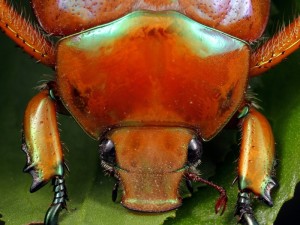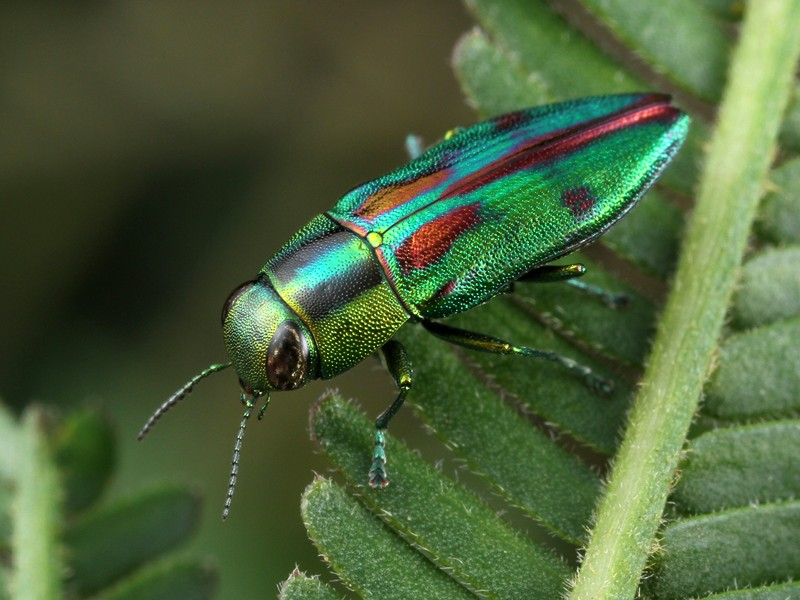Order Coleoptera

commonly called Christmas Beetles.
This is by far the largest order in Australia and the rest of the world. There are over 28,000 species in this country and they come in all shapes and sizes and can be found everywhere.
Beetles all have a pair of compound eyes, which can vary in shape and size from species to species. They also have a pair of antennae in many shapes and lengths. The vast majority of beetles have two pairs of wings. In all cases, the forewings have become hardened, or sclerotised, to form a protective cover over the hindwings, which are membranous and used for flying. When at rest, the hindwings are tucked under the forewings to reduce the risk of damage. In some flightless species, the hindwings have disappeared and the forewings have become fused together to act as body armour.

feed on pollen, nectar and other insects.
Collectively, Coleoptera eat just about anything as larvae and adults – leaves, wood, carrion, dung, fungi, nectar, seeds, each other and other insects. For this function, they all have mandibulate (chewing) mouthparts.
Beetles undergo complete metamorphosis. The larvae hatch from eggs and develop in 3 to 5 stages, called instars, which involves moulting at each stage. At the end of the final instar, they pupate, eventually emerging as fully-developed adults. The development from larvae to adult can take as long as several years.
Nature has an incredible imagination and beetles are prime examples. The variety of shapes, sizes and colours is staggering and at times breathtaking. I don’t think any photo can truly do them justice, but I’ve tried my best to capture what I have seen. You should have seen the ones that got away!
~~~~~
Click here to see the Beetles photo galleries
~~~~~

Special thanks to coleopterist Boris Buche from Germany, and biologist and author, Dr. Trevor Hawkeswood, and Justin Bartlett from DPI, who have been kind enough to assist with many of my beetle identifications. See the Acknowledgements & Links page for details of their sites.
Thanks also to Allen Sundholm for his assistance and advice, especially with regard to the Jewel Beetles (Buprestidae).
Also to Chris Reid from the Australian Museum, who has provided invaluable assistance with the Leaf Beetles (Chrysomelidae). Thanks for filling in some rather large gaps.
And a big thank you to Adam Slipinski from the CSIRO, and Tom Weir, former curator of the CSIRO’s Australian National Insect Collection, Canberra, for offering new and corrected identifications for some of the beetles in my collection.